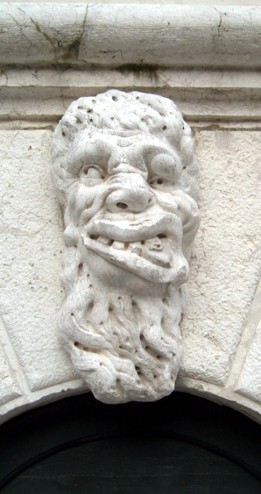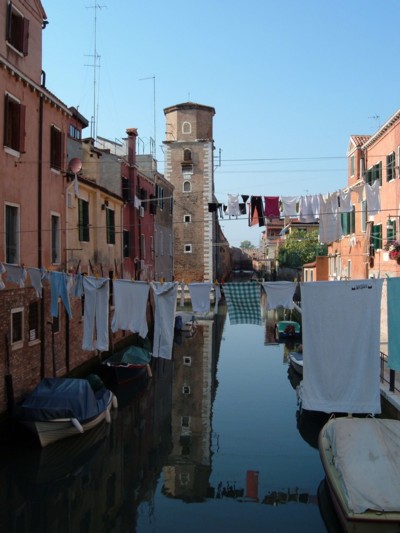Geography of the area
Castello is the most extensive of the six sestieri or districts of central Venice. It covers the long eastern part of the city – if Venice is a fish, then Castello is its tail. To the west it reaches into the heart of town, close to the Rialto. Eastwards it stretches past the Arsenale and Giardini Pubblici towards the leafy modern housing of Sant’Elena.
Our view
It’s pretty hard to make generalisations about Castello. Of all Venice’s districts this is probably the most varied one. To the west you have all the glamour of grand tourist Venice. Some of the town’s very finest art, architecture and monuments can be found here, as well as functional sites like the hospital. Over to the east are large ‘normal’, fairly working-class residential areas. We like both sides; the fact that even the grand Campo Santi Giovanni e Paolo is slightly off the main tourist trail for day-trippers, the ordinary Italian bars along Via Garibaldi sparsely-populated with ageing men watching football, just like in any town, the many different kinds of picturesque that you’ll find when exploring the area.
Around Castello
The variations of the district can be crudely summarised by describing the long waterfront (riva) which runs along the length of Castello, along Venice’s southern shore. Right out to the east is the workaday park of Sant’Elena where locals jog, walk their dogs and take their children. Passing the public gardens (Giardini Pubblici), where the national pavilions for the Biennale are located, you get fantastic views along the shore towards the Palazzo Ducale and St. Mark’s Square. Along this stretch you’ll find local people and the more enterprising tourists, photographing the view or sitting on the stone benches provided. Further west you pass the canal leading up to the Arsenale, which almost divides Venice in two at this point. Then you hit the tourist nightmare of Riva degli Schiavoni. Tour groups are disgorged from boats and mill around looking for their leaders; overpriced cafes and tacky souvenir shops line the shore as you approach the St. Mark’s area, the bridges crowded to the point of being impassible.
Eastern Castello is one of the only parts of Venice’s historic centre which actually has its own residential character; it’s larger than the ordinary pockets of housing you’ll find elsewhere. Tourists do get everywhere, of course, but here they are outnumbered by locals. Here there are canals and bridges, but everything is less grand than you’ll have seen elsewhere. Dilapidated buildings line quiet humble canals where washing flaps overhead. Via Garibaldi has a selection of ‘normal’ shops and bars and a local feel. During a festival or Carnival you might find local bands performing on a stage, and gossiping clusters of dressed-up residents.
The quieter end of the riva is a good destination in the early morning or at sunset, when there are lovely atmospheric views over the skyline of Venice. Old men fish in the lagoon, luxury yachts are moored alongside, and it’s all very picturesque.
Castello highlights and tourist attractions
San Giorgio degli Schiavoni – Carpaccio’s paintings in this Scuola are among the loveliest in Venice: watch the monks flee the lions.
San Zaccaria – attractive Gothic-Renaissance church with art by Giovanni Bellini, Tintoretto and others, and a low-lying, usually-flooded crypt.
Santi Giovanni e Paolo – one of the most important churches in Venice, with lots to look at. Outside is the famous equestrian statue of Colleoni by Verrocchio, and alongside is the lovely facade of the Scuola Grande di San Marco, now part of Venice’s hospital.
Arsenale – Venice’s historic shipyard, and the origin of our word ‘arsenal’. It’s hard to get inside the Arsenale when there isn’t an exhibition on, but even the entrance is worth a visit.
San Pietro – this little island, connected to the rest of Venice by a couple of long bridges, is a backwater now but was an important part of historic Venice. The church was Venice’s cathedral until 1807 (San Marco was ‘merely’ the chapel of the Palazzo Ducale), and contains important monuments and extravagant tombs.
Biennale – in odd-numbered years the Art Biennale fills the national pavilions in the Giardini Pubblici and also large spaces in the Arsenale. In even-numbered years it’s the turn of the Architecture Biennale.
Museo Storico Navale – naval museum filled with exhibits from Venice’s (and Italy’s) maritime past, including nineteenth-century gondolas.

Hotels
There is quite a range of accommodation in the area. We’ve stayed at cheap flats in the eastern end of the district, and touristy hotels in the east, including three decent hotels in western Castello, the very nice Campiello, the Locandiera and Hotel Paganelli, which sits between posher hotels on Riva degli Schiavoni.
> Hotels, B&Bs and apartments in Castello
Hidden charms
Try to find Corte Botera, a little medieval courtyard hidden away below the level of later streets. Look for the runes carved into one of the lions outside the Arsenale, and read up on his dramatic history. Watch a pink sunset from the Giardini Pubblici. Take your photo underneath the gurning (or diseased?) grotesque face on the Campanile of Santa Maria Formosa.

